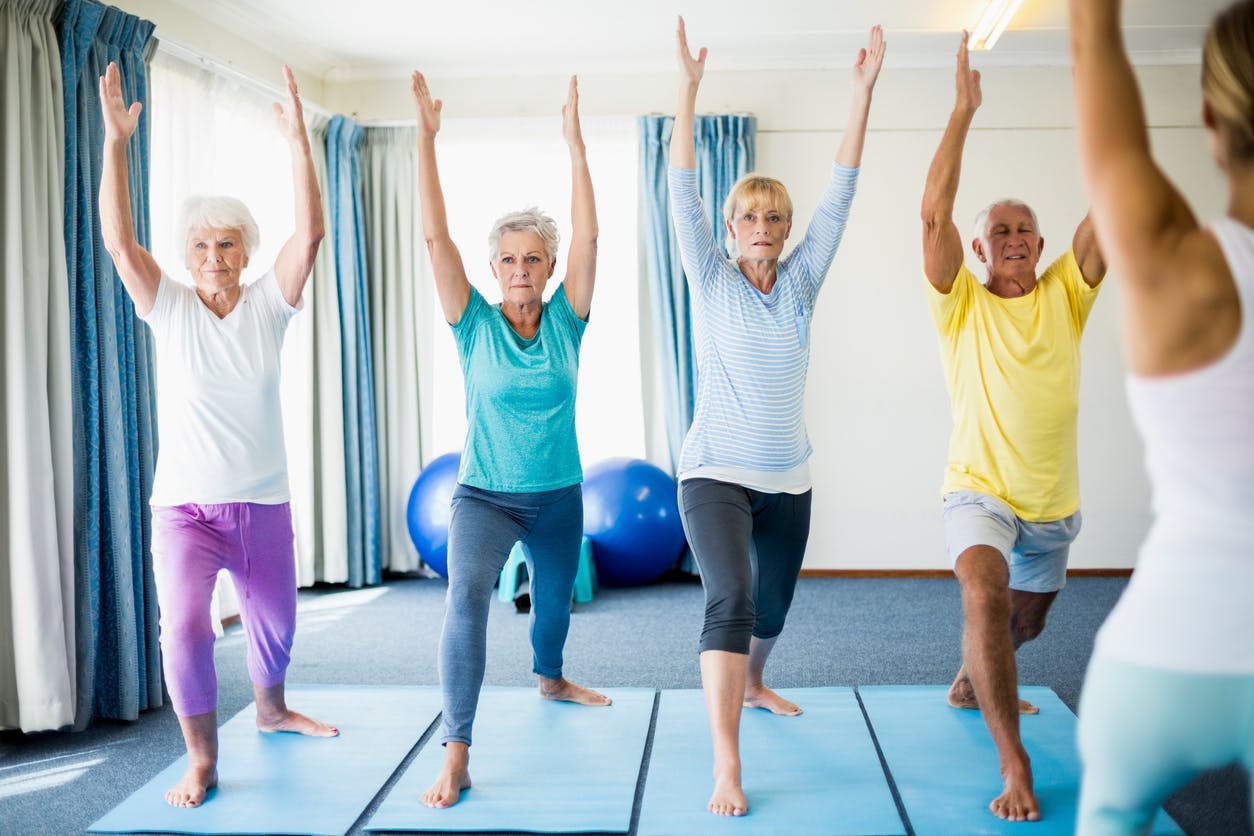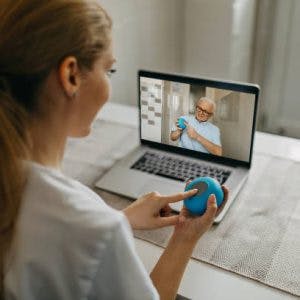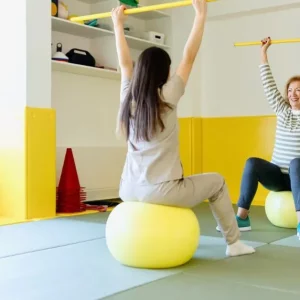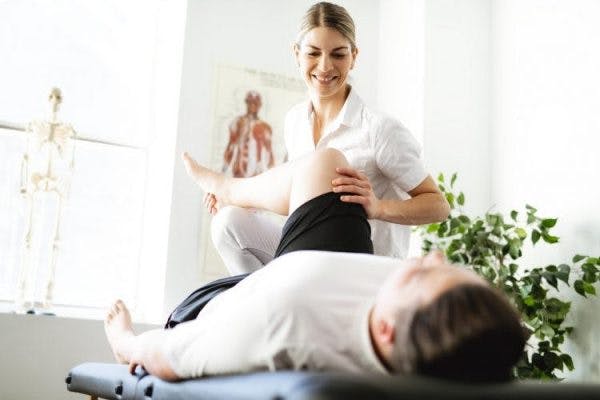To prevent stroke rehab from getting boring, it’s helpful to find fun activities for stroke patients to do at home. This ensures you keep stimulating your brain so it can adapt in ways that will help you recover function.
Different activities require different brain responses and, therefore, promote recovery. For example, anything that gets you to use your legs more will improve your mobility and anything that gets you to think will enhance your “cognitive fitness.”
The key to a healthy recovery from stroke is to continue to engage in all kinds of fun activities for stroke patients. Therefore, we have put together some interesting ideas to consider including in your daily life. You may find you need to modify how you accomplish things compared to before the stroke, but it is important you continue to pursue meaningful activities to keep life enjoyable while also enhancing your recovery.
Fun Recreational Activities for Stroke Patients
Recreation therapy combines therapy with the element of fun.
Some stroke survivors know exactly which hobbies they want to get back into their lives following a stroke. Others may need to explore until they find their favorite activities.
Here are some great hobbies and fun activities for stroke patients to try:
- Gardening. Stroke patients can enjoy being outside and physically active when gardening. If you gardened before your stroke, you may have to think of creative ways to adapt so that you can engage with your garden again. If you don’t have the mobility to garden safely, you may still enjoy being outside among plants. Engaging your sense of smell is even stimulating to your nervous system. Therefore, even smelling flowers promotes brain function.
- Wii Gaming. Many occupational therapists like using Wii as a fun form of therapy because the games double as rehab. Try bowling or tennis, which can be performed seated instead of standing for some stroke patients.
- Sing along to music. Music therapy is healing for the brain during stroke recovery. Listening to your favorite songs can be fun, but it’s even more therapeutic when you sing along. When you sing, it requires more attention and brain activity, which promotes brain recovery.
- Make your own music. Try learning a new instrument. Sophisticated instruments might be difficult to learn, as they require fine motor skills, but even some simple drums could provide a fun activity for stroke patients. Consider also the Music Glove.
- MusicGlove. This gamified hand therapy device is clinically proven to improve hand function in stroke patients. It’s like Guitar Hero for your hand, which makes a fun music activity.
- Needlecraft. Some stroke patients may enjoy knitting or crochet, if they have some fine motor movement in their hands. Needlework requires fine motor skills, sustained attention, and planning. All combine to enhance brain function. There are other craft projects that require less hand function. Macrame is a simpler craft that can even be adapted as needed. OTs or RTs are helpful in finding creative ways to adapt to challenging tasks.
- Aquarium making. The sensation of the rocks and water provides additional sensation to your affected hand and arm, providing input to your brain. A new project like this can be a fun activity for stroke patients.
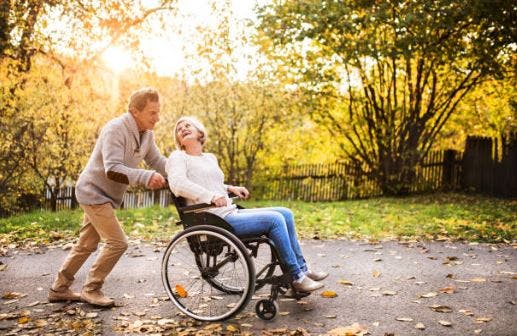
- Leaf collecting and pressing. Visit a nearby park or nature sanctuary and collect interesting leaves. Then, sandwich them between book pages for preservation and add them to your scrapbook. Being out in nature is very stimulating to your brain and, therefore, good for your recovery.
- Calligraphy. This is an advanced activity for most because it requires a steady hand. But it is possible it is just the stimulation you need to complete your recovery. As with any skill, the more you practice, the better you’ll get!
- Jewelry making. Threading beads onto string can be quite a challenging yet therapeutic activity for stroke patients. This is made easier with larger beads and string. Modify this fun activity for stroke patients as you need.
- Poker. Get your friends and family together for a fun game of poker. This will challenge your strategy and critical thinking while providing fun camaraderie.
- Model railroads. If you love mechanics and design, then you could find joy in building model railroads. The bigger sets aren’t just for kids!
- Keeping a pet. If you’re an animal lover, then it might be a good time to consider getting a pet. If your mobility is limited, consider a low-maintenance pet like a cat. Make sure you have the ability to perform basic pet care skills like cleaning a litter box and providing food each day. Petting an animal is therapeutic for the mind and the body!
- Decluttering. Have you heard of Marie Kondo’s famous book The Life Changing Magic of Tidying Up? It might inspire you to declutter your house. This can be a fun activity for some stroke patients, and a tidier house can help prevent falls. It’s a win-win.
Most of these activities require movement, but if you’re looking for fun activities for stroke patients that don’t require movement, let’s keep exploring.
Cognitive Activities for Stroke Patients
Cognitive activities help stimulate the brain and challenge your mental skills. If you want to improve cognitive function, like memory, attention, and critical thinking, give these cognitive activities for stroke patients a try:
- Listen to podcasts. Podcasts are a great way to keep your brain engaged and learn something new.
- Create a podcast. Interested in creating your own podcast? You don’t need to be an expert — you just need a good story to tell, and most stroke survivors have an amazing story behind their recovery, not to mention their unique life stories. Try documenting your story through your own podcast.
- Meditate. This is one of the best activities for stroke patients because it’s proven to improve attention and mental flexibility and grow your brain.
- Speech therapy apps. There are many apps available that provide speech and cognitive exercises for stroke patients. The CT Speech and Cognitive Therapy app, for example, contains over 100,000 exercises, so you have an endless supply of fun activities for stroke patients to try.
- Take a short nap. Sleep is important during stroke recovery because it gives the brain a chance to recover. Naps are encouraged! But if you sleep more than 30 minutes during the day at one time, you will fall into a deeper sleep, and this impacts your nighttime sleep. Deep sleep at night is important because it allows both the mind and the body to relax, and that is when healing occurs. Sleep is the top recommendation for stroke patients from Jill Bolte Taylor, a neuroscientist and author of My Stroke of Insight.
- Watch documentaries. Popular streaming services like Netflix are full of interesting documentaries that will keep you entertained while engaging your brain.
- Play Scattergories. This popular game can make a fun, challenging activity for stroke patients. It’s fast-paced, so play it when you’re up for a real challenge.
- Jenga. This game involves stacking small wooden bricks together until they crumble and fall. This makes it a great fine motor skill activity for stroke patients, especially because you need to work slowly and carefully.
- Connect Four. Try this game for a less challenging but fun activity for stroke patients.
- Card games. Simple games like War or Go Fish can be great fun during stroke recovery. Every time you use your hands, you send signals to the brain for recovery.
- Puzzles. Putting together a puzzle can be a great activity for stroke patients. Puzzles come in all levels, so you can begin with an easier one to build your confidence. If you get too frustrated, you can always take a break and come back later or choose an easier puzzle.
- Sudoku. This crossword-style brain game involves numbers and math. It comes in different levels of difficulty. Start with the easy ones and see if you like it.
- Checkers. This fun activity for stroke patients requires strategy and fine motor skills.
- Chess. This game requires more critical thinking than checkers.
- Trivia. Give your memory and critical thinking a workout with some trivia.
- Reading. A good book is perhaps the most classic cognitive activity for stroke patients. Try reading some books for stroke recovery. If your concentration is decreased, you can start with reading short articles on interesting topics. Reading before bed is a great way for your body to begin to relax.
Gross & Fine Motor Activities for Stroke Recovery
Certain activities can help improve your motor skills more than others. Here are some fun activities for stroke patients that double as therapy:
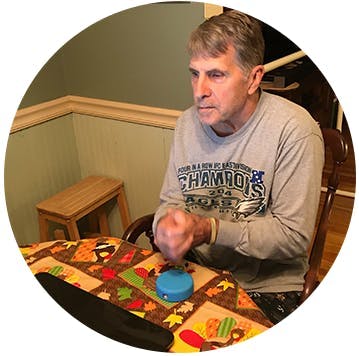
- FitMi. This rehab device is designed to be a virtual gym for stroke patients. It provides feedback on your computer or tablet on your performance of fun exercises and activities for stroke patients. This way you can see your improvements in mobility over time. The photo above shows a stroke patient using FitMi at home.
- Photography. Take a walk around a nearby nature sanctuary and take some photos. You’ll have fun while giving your hands and legs a nice workout. Distraction and pleasurable leisure activities are healing for the mind and body.
- Tai Chi. This slow-motion exercise is great for stroke patients because it helps improve balance and motor skills. Try these tai chi exercises for stroke patients.
- Gentle yoga. Yoga is a great activity for stroke patients because it helps gently stretch the muscles, which is good for spasticity, and eases body movement. Check out chair yoga exercises on YouTube if you have difficulty with standing balance. Talk to your yoga instructor about your limitations prior to performing stretches so they can make the necessary adjustments.
- Adapted yoga. You can check your local listings to see if there are special adapted yoga classes in your area tailored for physical limitations.
- Dancing. Put on some of your favorite tunes and move your body.
- Gentle exercise. Try some at-home exercises for stroke patients to improve mobility.
- Walking. If you have the mobility to walk, then enjoy a daily walk around your neighborhood. Walking 10-15 minutes a few different times throughout the day rather than one long, tiring walk improves blood pressure control. Your body wants to be in motion, but healing cannot happen when you are tired.
- Hiking. If you’re ready to really challenge your body, go for a light hike. Start with trails that are flat and well-populated for safety.
- Hula hoop. This exercise works your core, which helps improve balance after stroke. Make sure your feet are wide apart for standing stability.
- Cooking. Choose simple, healthy recipes to get started. Using both hands can be challenging, so go slow. There is also adaptive kitchen equipment to make the tasks easier.
- Baking. Baking can be fun and therapeutic for stroke patients. Try health recipes to make sure you’re not contributing to any stroke risk factors like high cholesterol or sugar.
- Playing an instrument. When you begin developing finger movement, resume playing an instrument you played prior to your stroke. It is easier to resume a previously known motor pattern, so your brain will recall those motions faster than a new activity, However, you may also want to consider learning a new skill of playing an instrument.
- Lite Brite. This classic game is just like the peg board that you probably used in therapy, only smaller. Even though it’s an activity you may have done as a child, it’s a great fine-motor activity for stroke patients. When you are distracted by a pleasurable leisure activity, there is less stress, therefore your body can heal more easily.
- Writing. Whether you choose touch-typing on the computer or writing by hand, this is a creative activity that helps improve fine motor skills. Adult coloring books and felt tip markers are easier than writing. Children color prior to going to school to develop the small muscles in their fingers.
We hope that something in this list appeals to you. Or you may think of another fun activity for stroke patients that wasn’t mentioned here. It doesn’t matter so much what you do as long as you are engaging your mind and your body while having fun. The more fun you are having the more you will engage in activities that will stimulate your brain and the better your overall health.
Best of luck on the road to recovery!

